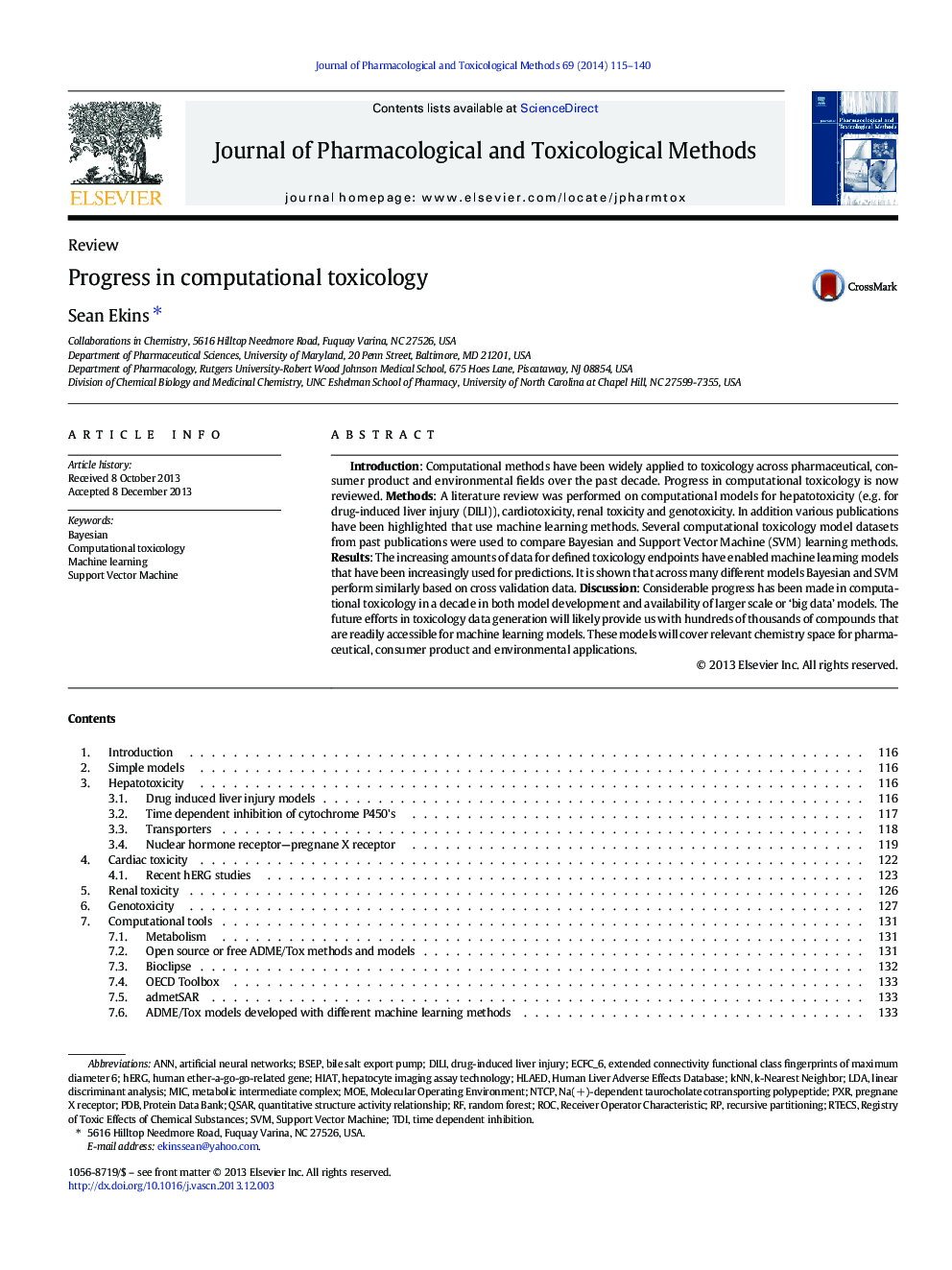| Article ID | Journal | Published Year | Pages | File Type |
|---|---|---|---|---|
| 2549097 | Journal of Pharmacological and Toxicological Methods | 2014 | 26 Pages |
Introduction: Computational methods have been widely applied to toxicology across pharmaceutical, consumer product and environmental fields over the past decade. Progress in computational toxicology is now reviewed. Methods: A literature review was performed on computational models for hepatotoxicity (e.g. for drug-induced liver injury (DILI)), cardiotoxicity, renal toxicity and genotoxicity. In addition various publications have been highlighted that use machine learning methods. Several computational toxicology model datasets from past publications were used to compare Bayesian and Support Vector Machine (SVM) learning methods. Results: The increasing amounts of data for defined toxicology endpoints have enabled machine learning models that have been increasingly used for predictions. It is shown that across many different models Bayesian and SVM perform similarly based on cross validation data. Discussion: Considerable progress has been made in computational toxicology in a decade in both model development and availability of larger scale or ‘big data’ models. The future efforts in toxicology data generation will likely provide us with hundreds of thousands of compounds that are readily accessible for machine learning models. These models will cover relevant chemistry space for pharmaceutical, consumer product and environmental applications.
